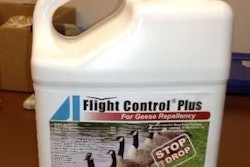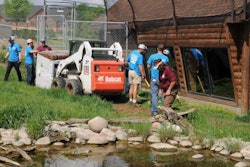
If you are towing a trailer you’re probably using chains, and if you are hauling equipment on that trailer you are using chain binders – or at least you should be.
Having the load properly balanced on the trailer is a big issue with pickups. So, too, is how that trailer and its load are secured.
That’s why using chains and chain binders are vital to towing in a safe and responsible manner and securing loads.
It’s also the law. Not using chains and binders in the correct manner can, and does, put your company in a precarious liability situation should an accident and injuries occur.
But just because chains and binders are being used doesn’t mean they are safe; a chain is only as strong as its weakest link.
And when you’re using chains as a backup safety device for trailers, or to secure heavy equipment and cargo being transported on the trailer, there are weak links aplenty to take note of.
One of the more helpful resources we’ve come across regarding the use of chains is a document, available online from the U.S. Fish and Wildlife Service (FWS).
It’s that agency’s guide book for FWS employees and contractors on all kinds of heavy equipment operations and hauling.
The manual is available for download. The specific chapter on chains is 243 FW 5: For towing, carrying cargo, and securing loads.
There’s a lot of good tips and advice on not just on chains but other towing related issues as well.
It’s an excellent educational read for anyone who 1) is new to towing trailers and hauling equipment, or 2) needs a refresher on towing safety.

1. Use safety chains or cables that meet Society of Automotive Engineers International standard J684 to prevent the vehicle and trailer from separating in case of a trailer or hitch disconnect.
2. Cross safety chains or cables in an “X” pattern below the ball mount with enough slack so that they do not restrict turning, drag the ground, or allow the coupler to hit the ground.
3. Do not twist the safety chains to shorten their length.
4. Determine the size of the chain to use by the weight of the equipment that you are transporting and the Working Load Limit (WLL) of the chain and other tiedown components. The size/grade/strength of all tiedown components must, at a minimum, meet the requirements in section 5.8B and 49 CFR 393. WLL is the maximum safe load that may be applied to a component of a cargo securement system during normal service.
5. Use a minimum of four separate tiedowns for heavy- and light-duty equipment and additional tiedowns for attachments/implements as required in 49 CFR 393.110 and 393.130 (also see section 5.10).
6. Place tiedowns so that the equipment/cargo does not move forward, backward, or from side to side. DOT requires a tiedown assembly every 10 feet (3 meters) of the equipment/cargo length.
7. Use chain assemblies for tiedowns in accordance with 49 CFR 393.100-136.
8. Do not use cold shuts (devices to join links of a chain) to extend the working length of a chain or as a component of any tiedown assembly. You may only add devices that are approved by the chain manufacturer and that maintain the integrity and rating of the tiedown assembly.
9. When you use tiedown chains, only use ratchet load binders. You may not use lever type load binders.
10. Use edge protection where chains or straps contact equipment edges and those edges may damage securement devices (cause abrasion or cutting).
EDITOR’S NOTE: Tom Jackson is the Executive Editor for sister site Equipment World.










